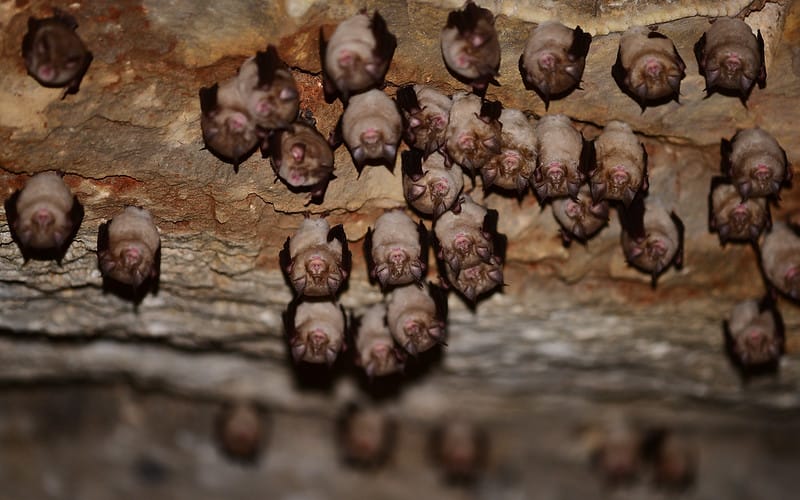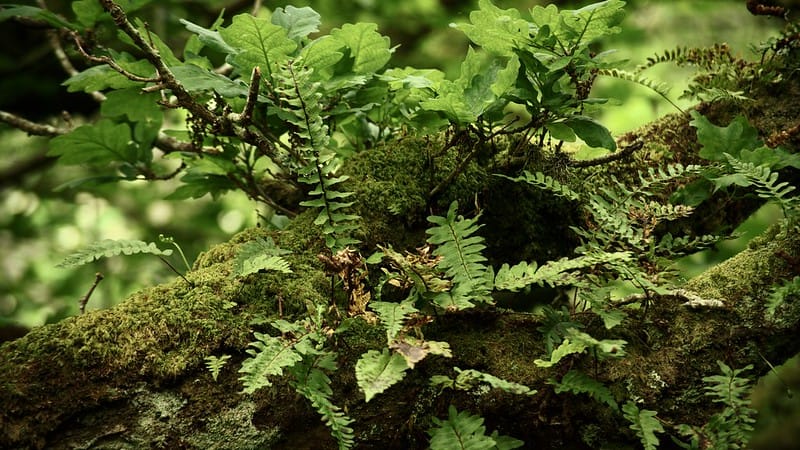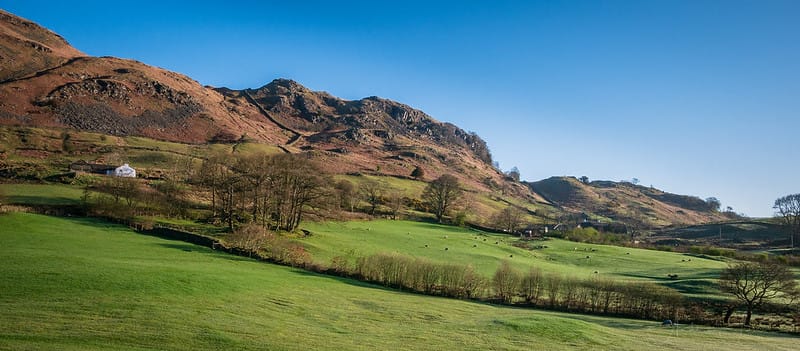
Support for Farmers & Defining Rewilding
The latest news on nature and conservation in Britain.
National news
Farming | On Tuesday, the Prime Minister spoke at the National Farmers’ Union conference to underline the government's commitment to supporting British farmers. Rishi Sunak announced a range of new measures to support British-grown food, including an annual Food Security Index and a yearly Farm to Fork summit. The NFU broadly welcomed the plans, but pointed out they included no actual new funding. NFU President Minette Batters criticised Sunak for suggesting that farmers work for passion rather than money. ‘These are businesses,’ Batters said. ‘They don’t do it for the love of it.’ Batters is stepping down after six years at the helm, and also took the opportunity to criticise the Environment Agency and Natural England, who she said are ‘not fit for purpose’ after Brexit. The conference took place amid rising tensions, with farmers struggling to meet rising costs, compete with low supermarket prices and adapt to the new post-Brexit payments scheme, which protesters say is too focused on the environment. The news was widely covered by national outlets. Elsewhere, Wales’ outgoing first minister has defended his controversial plans for environmental subsidies, reports the BBC.
Uplands | The Guardian has revealed that Defra buried analysis of the financial prospects for upland farmers after realising the findings were almost entirely negative. The newspaper used Freedom of Information Requests to obtain the minutes of meetings in which Defra officials discussed the analysis, which was intended to show different ways to make upland farms profitable under the post-Brexit payment schemes. However, in the minutes, officials admitted that upland farmers were falling into a financial crisis, and feared that when farmers saw the data they would decide to sell up. Julia Aglionby, who chaired the Uplands Alliance while the analysis was being undertaken in 2022, said it was both ‘disappointing and irresponsible’ of Defra not to publish the assessment. She added that, seven years since the Brexit referendum, Defra has still not fully detailed their offer of support for moors and commons. However, a blog by Green Alliance claimed that the prognosis for upland farmers could be improved by better designed policies.
Beavers | The Welsh public are keen to see beavers returned to the wild in Wales, according to a survey commissioned by the North Wales Wildlife Trust and conducted by the University of Exeter. The Welsh Beaver Project has been looking into the feasibility of reintroductions since 2005, yet this is the first time an all-Wales online survey has been conducted. It received over 3,000 responses from residents in Wales, with the majority (88.7%) of respondents responding in favour. The main reasons listed were benefits to biodiversity and wetland habitats, waterway management, and recognising beavers as a native species. Over 83% of respondents were also in favour of legal protection of beavers. Alicia Leow-Dyke, a project officer, said the team were ‘pleased’ by the positive response, but added that they would review any concerns raised by the survey. The Cambrian News reported the news.
In other news:
- Scottish ministers are expected to introduce a new code of conduct for grouse shooting estates, which requires them to use medicated grit responsibly, reports the Herald.
- Labour has vowed to fully stamp out fox-hunting, which currently continues legally through trail or drag hunting, reports the Times. Meanwhile, George Monbiot has written a three-point plan for Labour to save the environment.
- The first round of NatureScot’s scheme to encourage peatland restoration is already fully subscribed for its first pilot year.
- Campaigners are calling for an immediate ban on the use of carcinogenic chemicals by the fish farm industry, reports the Ferret and ENDS.
- Defra has launched a science network to provide evidence on the environmental impact of deep-sea mining.
- The Wildlife Trusts have launched a campaign to raise awareness of hidden peat in retail products, reports BirdGuides.
Across the country
Hebrides | The owners of Taransay, an island in the Outer Hebrides, are planning to restore its habitats to their natural condition. The 3,800 acre island is the UK’s largest uninhabited island, and is best known as the filming location for the BBC’s survival series Castaway. Now, Adam and Cathra Kelliher want to bring back trees, heather, flowers and mammals including deer, wild cattle, ponies, pigs – and even beaver and elk. Adam Kelliher said: ‘Our vision is to take the island back into pre-intensive grazing, back to the Bronze Age. It will be covered by Atlantic rainforest.’ The couple are hoping to use biodiversity credits to allow companies to invest in the improvements, and are also planning to run an exclusive survival retreat on the island, harking back to its Castaway fame. The Times covered the story.
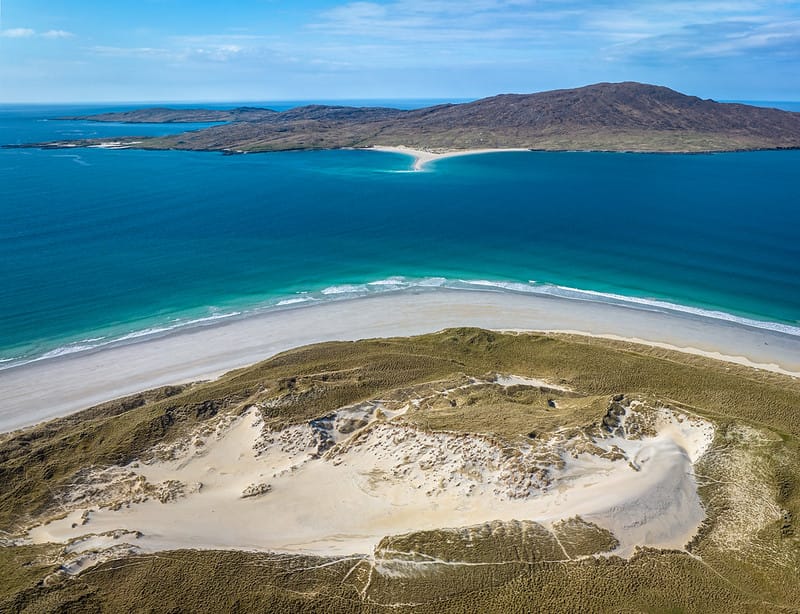
Dorset | The National Trust is creating ‘leaky’ dams to rewet Agglestone and Greenlands Mires, which form part of England’s first ‘super’ national nature reserve near Studland. The mires were previously drained by artificial ditches to be used for conifer plantations or grazing. Now, timber, heather bales, and bunds constructed of peaty soil will be used to partially block the ditches, allowing water to slowly rewet the mires. The restored habitat will boost a range of rare wetland species, from marsh saxifrage and bog orchids to raft spiders, bog hoverflies and skylarks. The BBC and the Guardian reported the news. Elsewhere, Natural England has announced the extension of the Pebblebed Heaths reserve in Devon, to connect with 90 hectares of wetland in the lower Otter valley. The Otter Estuary reserve is the third in the King’s Series of national reserves, and will support species including silver-studded blue butterflies and populations of sea trout and Atlantic salmon, reports the BBC.
Isle of Man | Douglas City Council and the Manx Wildlife Trust have teamed up to launch ‘Dragonflies’ Den’, a wildlife scheme designed to harness local passion to combat the twin crises of biodiversity loss and climate change. The joint venture will see residents, schools, community groups and businesses pitch ideas to create or boost initiatives that support biodiversity and protect the local environment. Developed in association with Unesco Biosphere Isle of Man, the city council will support successful ideas, while a team from MWT will also be available to help develop pitches, ranging from community gardens and orchards through to wildlife ponds and pollinator patches. Councillor Andrew Bentley said the project was a ‘celebration of the power that communities hold to create change in our own backyard’. The BBC covered the story.
Elsewhere:
- Heavy rain has forced Right to Roam campaigners to postpone their planned mass trespass on a Dartmoor ‘access island’, reports the Farmers Guardian. Read more about the issue in the Guardian and the BBC.
- A pair of kingfishers have begun building their nest at Slimbridge wetland centre in Gloucestershire – the earliest date on record following a mild winter, reports the BBC.
- The Farne Islands are reopening to visitors after a two-year closure due to bird flu, reports ITV News. Nearby, the Lindisfarne nature reserve is marking its 60th anniversary.
- Managers of the South West Coast Path are looking at adapting the route due to the impacts of severe weather, reports the BBC.
- A Norfolk estate is planning to start ‘farming for the environment’ rather than food, funded by credits from the biodiversity net gain rules, reports Yahoo News.
- A number of European honey buzzard sites are to be made public in Sussex, with birders encouraged to visit them, reports BirdGuides.
- A farm in Kent, home to one of the world’s largest collections of heritage fruit trees, has been bought by a horticultural research trust, reports the BBC.
- Hawnby village in North Yorkshire has been recognised as ‘dark skies friendly’, reports the Northern Echo.
- A Devon garden has planted six endangered Wollemia pine saplings to help save the ancient Australian species from extinction, reports the BBC.
- Volunteers in Ellesmere, Shropshire, have begun their annual ‘toad patrols’ to help migrating amphibians crossing perilous roads, reports the BBC and Shropshire Star.
- An action group in Dane Valley has planted around 9,000 trees on the western fringes of the Peak District to help combat climate change, reports the BBC.
- The Environment Agency has launched a campaign to highlight the risks of growing certain flood-prone crops in southwest England.
- One of the UK’s ‘most technically advanced’ vertical farms has opened in Gloucestershire, reports the BBC.
- The National Lottery has awarded Derbyshire Wildlife Trust £1.1m of funding to aid its efforts to rewild Allestree Park.
- Residents of Cumbria are claiming to have sighted a black leopard – but experts are unconvinced, reports the Guardian.
- Worcester’s first Green major has controversially axed meat from the council reception menu, reports the BBC.
Reports
Beaches | An assessment by the Scottish Association for Marine Science and Marine Scotland has found that Scotland’s remote beaches are among the worst plagued by litter. Researchers scoured 100 metre stretches of 27 beaches on the west coast of the country, from Ayrshire to the islands of Islay, Tiree, Mull and Skye. In some areas the litter mounds reached 90cm high, and overall researchers collected 278kg of plastic refuse and almost 40,000 items. They found that the secluded Black Beach of Mull was the worst polluted, with 8,740 items per 100m, followed by Talisker Bay on Skye and Saligo Bay on Islay. Overall, 46% of the items originated from the fishing and shipping industries, while 19% was from on land. Kerrie Flockhart, co-ordinator of Scottish Coastal Clean Up, said that the volume of litter was ‘incredibly shocking to see’, and argued that for Scotland to tackle its marine litter crisis ‘we first need to acknowledge the scale of the problem’. The Times covered the research.
Journalism | A report by the International Press Institute warns that climate and environmental journalism is under fire from a myriad of threats. Drawing on interviews with nearly 40 journalists in 21 countries, the report reveals that journalists who cover environmental stories are increasingly being subjected to threats from physical violence to arrests, legal harassment, online attacks, and restrictions on freedom of movement. They are also targeted by powerful private and state actors seeking to protect their lucrative interests linked to environmentally harmful activities. IPI executive director Frane Maroević said the report reveals ‘the systematic and wanton ways used to silence [journalists] and prevent the exposure of environmental crimes’, and that it should be ‘a call to action’ to all who care about independent journalism. The report also examines strategies for countering the attacks, including collaboration, safety measures and legal support structures.
Pollinators | A report by NatureScot details the ‘swarm’ of work taking place across Scotland to support pollinating insects. The 2023 progress report found that almost every local authority in the country is carrying out a range of activities to support the aims of the national pollinator strategy. In addition, environmental bodies, scientists, communities and individuals from the Northern Isles to the Borders are taking action, from carrying out insect surveys to implementing reduced mowing regimes. Large-scale projects include the Tweed partnership working across 50 sites along the River Tweed to create and restore 40 hectares of wildflower-rich habitat. On the west coast, a nectar network is creating corridors along the Ayrshire Coast, while in the north, the Highland Wildflower Meadow Mosaic has restored 91 pocket meadows. Strategy manager at NatureScot, Jim Jeffrey, said the ‘swell of support’ has come at a ‘much needed’ time, when many species of pollinators are facing sharp declines.
Science
Rewilding | It is now the fourth year of the UN’s Decade on Ecosystem Restoration (2021–2030), and growing interest in rewilding practices has given rise to questions about the differences between restoration and rewilding. A paper in Biological Conservation reviewed 215 scientific articles on the topic to determine the exact position of each field. It found some notable differences between the two, including a bottom-up versus top-down approach, and distinct goals: the recovery of a defined, determined target ecosystem, versus the recovery of natural processes often with no target endpoint. However, the authors conclude that both approaches have a common scope, which boils down to the ‘recovery of ecosystems following anthropogenic degradation’. They argue that reconciling the two fields, and using the approaches in a complementary manner, could help to better achieve their goal.
Genomes | The genomes of butterflies and moths have remained largely unchanged for 250 million years, according to a study in Nature Ecology and Evolution. Lepidoptera – the group of winged insects containing butterflies and moths – is extremely diverse, containing around 10% of all living organisms. To investigate the evolutionary resilience of the group, researchers from the Wellcome Sanger Institute and the University of Edinburgh analysed more than 200 genomes. They were able to trace the genetic code back to the last common ancestor, over 250m years ago, and identify 32 ancestral chromosomes that are still the building blocks of nearly all lepidoptera today. The authors said the findings could help with conservation efforts for the species, as well as understanding how biodiversity evolves at a broader scale. The Guardian covered the research.
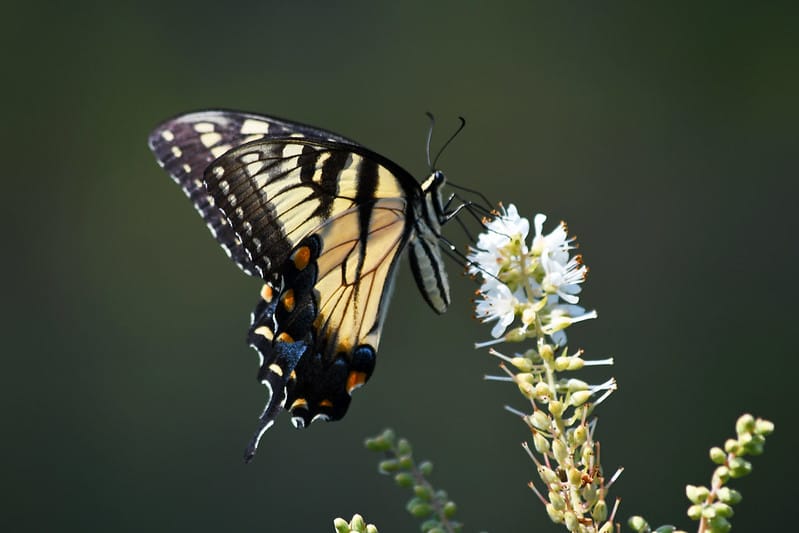
Food | The impact of eating meat on the environment is well known, but what about staples such as rice, beans and potatoes? A study in Plos One analysed the environmental impact of 151 popular dishes from around the world. Researchers used crop and pasture area data, as well as the IUCN’s red list of threatened species, to calculate the biodiversity footprint of each ingredient. They found, unsurprisingly, that meat dishes were the worst offenders, with Brazilian-raised beef topping the charts. More surprising was that some dishes containing rice and legumes were also problematic, depending on where they were grown. Crops such as chickpeas, beans and lentils grown in tropical areas were often found to encroach on critical areas rich in biodiversity. On the flip side, starchy ingredients such as potato and wheat were found to have the least impact. The authors note that even ‘small changes in the dish[es] we choose to eat’ can go ‘a long way in preventing species extinctions’. The Guardian and Phys.org covered the research.
Driftwood
Mycelia | Emergence Magazine has published two pieces, both featuring mycologist Merlin Sheldrake, to accompany a symposium curated by the More Than Human Rights (MOTH) Project. In this article, Sheldrake is in conversation with cultural ecologist David Abram as they discuss the multitude of ‘selves’ that make up the breathing biosphere. During the conversation they consider how to honour non-human perspectives, and attempt to reimagine the legal framework which defines rights and wellbeing for non-human life forms. In this second piece, Sheldrake and creative director Barney Steel explore various ‘mycelial landscapes’, and question how fungi can challenge traditional concepts of individuality, intelligence and life. They ruminate on the adaptability of species, the artificial separations between science and art, and how to renew our definition of intelligence.
Birdsong | An interview in the Guardian introduces Seán Ronayne, an Irish ornithologist with a singular quest: to record every bird in Ireland. Already the 35-year-old has amassed nearly 10,000 recordings, which – according to his analysis – feature around 194 regularly occurring species. His ‘total immersive obsession’, as he calls it, first took flight after he returned to Ireland from living in Catalunya, and was confronted by the ecological degradation at home. ‘In a way, what I do is about capturing the beauty of what we still have and increasing people’s awareness of it so that maybe we can turn it around in some way,’ he explains. Ronayne will soon release an ambient album, Wild Silence, comprising 15-minute tracks of nature, and a documentary about his project called Birdsong is due to premiere at the Dublin film festival on 29 February.
Biofluorescence | Did you know that temperate rainforests contain enough bright neon colours to rival the most vivid coral reef? The catch is that most of them are not visible to the human eye – unless you have the right tools. This BBC feature follows nature guide David Atthowe on his tours of Wales’ Celtic rainforests in the pitch dark, using ultraviolet torches to illuminate the stunning biofluorescent colours of plants and animals. Among the places he visits are ancient woodlands in the Wye Valley and on the Pembrokeshire coast, including Ty Canol Wood, home to more than 400 known species of lichen. Atthowe reports: ‘I never thought I would see flowers glow bright blue, green mushrooms lighting up the forest floor, hedgehogs that glow blue, and flowers that look like they have electricity running through them.’ See the colours yourself in this video.
Further reading:
- A feature by BBC Wales investigates how rainforests have inspired Welsh folklore tales.
- For World Gaelic Week, a blog by NatureScot looks into some of the evocative names of Scotland’s plants, animals and landscapes in Gaelic.
- Read in the BBC about the ‘extraordinary mistake’ by a Shropshire photographer which led to rare images of birds with light refracted through their wings in a rainbow effect.
- A feature in the Guardian explores the world of toading, where volunteers in Somerset spend damp and cold nights carrying migrating amphibians across tarmac.
- Also in the Guardian, this article investigates whether scientists could monitor biodiversity from space, much as the weather is tracked.
- This feature in Vogue Business asks whether ‘nature’ is the newest high fashion trend.
- Read in Euronews about the 2024 finalists for European Tree of the Year, including a 4,000-year-old olive tree and a French weeping beech.
- A feature in the Telegraph spotlights an initiative by vicars to turn churchyards into ‘living sanctuaries’.
Happy days
Hedgehogs | After years of decline in British gardens, an annual survey by BBC Gardeners’ World magazine has found that hedgehog numbers are increasing. In 2023, 33% of respondents to the survey reported seeing a hedgehog in their garden, up from 31% in 2022. The largest increase was in urban areas (up by 2.7 percentage points), although rural respondents also marked a small increase. In further good news, 77% of respondents said they had been implementing steps to improve their garden for wildlife, including avoiding slug pellets, checking for creatures before strimming, and encouraging less ‘tidy’ gardens – all of which can help hedgehogs survive in an increasingly fragmented habitat. The Guardian reported the news.
Subscribe to our newsletter
Members receive our premium weekly digest of nature news from across Britain.
Comments
Sign in or become a Inkcap Journal member to join the conversation.
Just enter your email below to get a log in link.


